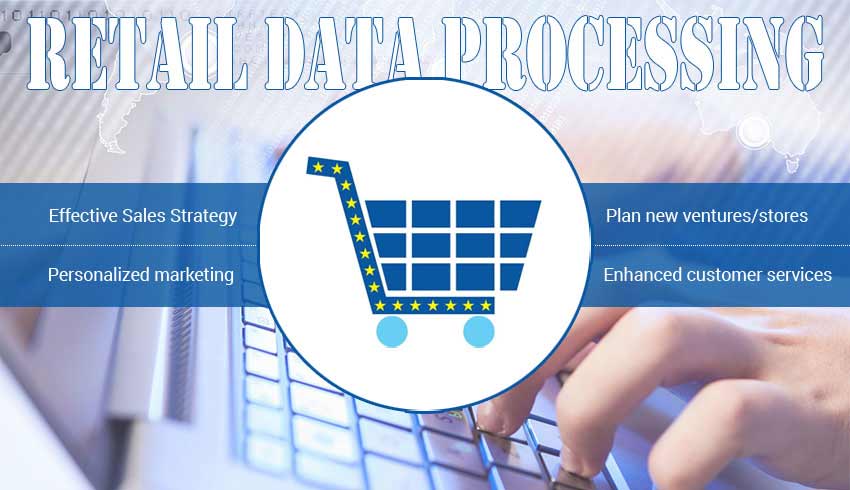
Modern day retail stores (offline & online) generate and capture enormous amount of data through multiple channels and customer touch-points. However, strange enough, that not many retail players are putting all this data in practical use! Absence of an agile data processing solution is resulting into “repressive” data silos, which eventually make the retailer overlook a large part of their own data.
According to a recent study, several retail companies miss out on data-driven business intelligence, hidden inside 88% of data, which they usually ignore. Determining which information is valuable and which is best left ignored, demands thorough processing of extensive volumes of data.
Since, processing massive database does not form the core area of expertise for many retailers; they find it time consuming and unproductive. Hence; they don’t take notice of it. This results into huge portion of data ending up into the silos, which makes unlocking valuable insights next to impossible!
Needless to say, lack of market insights, further culminates into missed out opportunities.
Data Processing – Turning Challenges into Opportunities!
Recent data upsurge in the retail sector has made it imperative for retailers and brands to quickly embrace data processing for an effective response to various data-related challenges.
An agile and dynamic data processing solution enables successful and optimum utilization of information. Over years, several business domains like insurance, healthcare and real-estate have successfully harnessed the power of structured, consolidated and updated data-banks. Taking a cue from these industrial domains, modern-day retailers have started adopting data processing to unlock valuable market insights and understand the ever-changing consumer demands.
A data processing expert crunches down massive rows of information and processes it to convert the data into a series of easy-to-understand formats such as chart, table and dashboards. In fact, using refined and processed data, further streamlines your CRM and/or ERP for smooth and effective functioning of several business operations.
Unlocking Insights
Retail companies gather a huge variety of unstructured data comprising information like sales, expenses, revenue, conversions, footfall (for physical stores), etc. However, since most data is scattered, it fails to serve its primary purpose – provide significant insights into current and future trends of retail business.
This adversely affects decision-making capabilities and hence; even the most well-planned business strategies fail big time. Processed data makes it possible to have a centralized data-bank, which further eases down data analysis and visualization, enabling well-informed decisions.
1. Effective sales strategy – Knowledge of latest market trends play a very crucial role in chalking out effective sales strategy. However, with raw and unstructured information, this exercise hardly yields any results. When raw information is converted into tables/graphs or charts, it becomes easier to analyze market scenarios.
It provides a crystal clear vision of what kind of products are attracting consumer attention. Equipped with this information, you can roll out sales policies with a major focus on increasing conversions of footfalls. Moreover, further analysis of data of purchasing patterns, give better perception into overall customer psyche and hence you can optimize their shopping experience based on their preferences.
2. Personalized marketing – When data is thoroughly analyzed, it further increases the opportunities for upsell and cross-sell. It is important for a retailer to understand consumer purchasing pattern and accordingly chalk out policies for personalized marketing. When you are equipped with consolidated and formatted data, tracking down buying habits of consumers become easier. Analyzing this information, you can plan out personalized marketing campaigns to retain old consumers and even attract new ones with similar interests.
3. Plan new ventures/stores – Processed data provides an insight into existing sales and stocked data. This can be further augmented with various other factors like demography to predict revenues per square foot for a proposed store with reasonable accuracy. This can be further applied to prioritize the opening of new stores.
4. Enhanced customer services – For years, retailers greatly relied on consumer feedbacks to understand their preferences for rolling in and rolling out of policies. This was done to augment customer satisfaction and ensure store earning touches the sky!
However, with a recent rise in multiple channels and digital media, it becomes difficult for the retailers to monitor customer feedbacks, suggestions and grievances. This often creates a major obstacle for the retail shop to connect with the customers and understand their mind-set.
Conclusion:
Information presented in easily consumable charts and dashboards enable quick decision-making, further turning challenges into opportunities. Processed data helps to keep a tab on the reviews, feedbacks and grievances. Using this knowledge, a retailer can further help connect to their customers, look into their grievance and strive hard to enhance their shopping experience.



